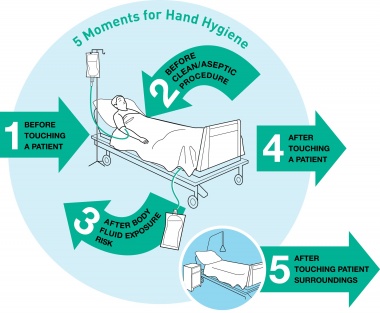Communicable Diseases: Difference between revisions
No edit summary |
No edit summary |
||
| Line 18: | Line 18: | ||
|} | |} | ||
== | == Signs & Symptoms == | ||
== Risk Factors == | |||
== Implications for Physiotherapy == | == Implications for Physiotherapy == | ||
| Line 40: | Line 42: | ||
|} | |} | ||
<br> | <br> | ||
== Resources == | == Resources == | ||
== Recent Related Research (from [http://www.ncbi.nlm.nih.gov/pubmed/ Pubmed]) == | == Recent Related Research (from [http://www.ncbi.nlm.nih.gov/pubmed/ Pubmed]) == | ||
| Line 51: | Line 53: | ||
References will automatically be added here, see [[Adding References|adding references tutorial]]. | References will automatically be added here, see [[Adding References|adding references tutorial]]. | ||
<references /></div> | |||
<references /> | |||
Revision as of 21:02, 12 January 2017
Original Editor - Your name will be added here if you created the original content for this page.
Top Contributors - Naomi O'Reilly, Lucinda hampton, Kim Jackson, Tony Lowe, Admin, Vidya Acharya, Tarina van der Stockt, WikiSysop, Jess Bell, Khloud Shreif, Olajumoke Ogunleye, Niha Mulla, 127.0.0.1, Laura Ritchie and Oyemi Sillo
Introduction[edit | edit source]
According to the World Health Organisation “over 13 million people die each year from Infectious and Parasitic Diseases: One in two deaths in some developing countries. Poor people, women, children, and the elderly are the most vulnerable. Infectious diseases continue to be the world’s leading killer of young adults and children”.
Socioeconomic, environmental and behavioural factors, as well as international travel and migration, foster and increase the spread of Communicable Diseases. Vaccine-preventable, foodborne, zoonotic, health care-related and communicable diseases pose significant threats to human health and may sometimes threaten international health security.
What are Communicable Diseases[edit | edit source]
Signs & Symptoms [edit | edit source]
Risk Factors[edit | edit source]
Implications for Physiotherapy[edit | edit source]
As healthcare workers it is important that we recognise the symptoms of the most important infectious diseases and direct those affected to appropriate treatment as quickly as possible. It is also important to be aware of the role physiotherapy has in treating and advising patients presenting with these diseases (e.g. the benefits of exercise for patients with HIV/AIDS).
The statistics related to HealthCare Associated Infections make it clear Hand Hygiene in the healthcare environment is extremely important. As physiotherapists we need to learn how to use the alcohol hand rubs effectively and utilise these frequently. The WHO Guidelines identify 5 moments for Hand Hygiene:
- Before Touching the Patient Why? Protect the patient from acquiring germs that might be on your hands. Clean your hands prior to personal care activities like bathing, dressing, brushing and oral care, as well as non-invasive observations (taking vital signs) and treatments.
- Before Clean/Aseptic Procedure Why? Protect the patient from harmful germs, including their own, that could enter the body during procedures like needle insertions, medication administration and connecting to invasive medical devices like EEGs.
- After Body Fluid Exposure Risk Why? Protect yourself and the patient’s surroundings from harmful patient germs generated via contact with fluids like blood, saliva, mucous, semen, tears or urine.
- After Touching a Patient Why? Protect yourself and the immediate environment from harmful patient germs. After you touch a patient, you could have microorganisms on your hands that would get passed on to other patients.
- After Touching Patient Surroundings Why? Protect yourself and the immediate surroundings from harmful patient germs.
 [1] [1]
|
[2] |
Resources[edit | edit source]
Recent Related Research (from Pubmed)[edit | edit source]
Extension:RSS -- Error: Not a valid URL: Feed goes here!!|charset=UTF-8|short|max=10
References[edit | edit source]
References will automatically be added here, see adding references tutorial.
- ↑ DebMed. 5 Moments vs. 2 Moments. What is enough when it comes to Hand Hygiene?. http://blog.debmed.com/blog/5-moments-vs.-2-moments.-what-is-enough-when-it-comes-to-hand-hygiene (accessed 2 Dec 2016).
- ↑ Huang Shouyung. WHO Hand Hygiene Video https://youtu.be/s08yiZBSGOw (accessed 2 Dec 2016).






